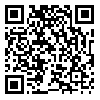دوره 26، شماره 1 - ( بهار 1404 )
دوره، شماره، فصل و سال، شماره مسلسل |
برگشت به فهرست نسخه ها
Download citation:
BibTeX | RIS | EndNote | Medlars | ProCite | Reference Manager | RefWorks
Send citation to:



BibTeX | RIS | EndNote | Medlars | ProCite | Reference Manager | RefWorks
Send citation to:
V M, Catherine S P, Rajasekar M. Comparison of Deictic Gestures in Tamil-Speaking Toddlers at Risk for Autism Spectrum Disorder and Typically Developing Peers. jrehab 2025; 26 (1) :150-165
URL: http://rehabilitationj.uswr.ac.ir/article-1-3517-fa.html
URL: http://rehabilitationj.uswr.ac.ir/article-1-3517-fa.html
وی مونیش، کاترین س. پاولین آروکیای، راجاسکار م.ک.. مقایسه حرکات اشارهای در کودکان تامیلیزبان در معرض خطر اختلال طیف اُتیسم و همتایان سالم. مجله توانبخشی. 1404; 26 (1) :150-165
URL: http://rehabilitationj.uswr.ac.ir/article-1-3517-fa.html
1- موسسه عالی آموزش و پژوهش بهارات (BIHER)، چنای، هند. ، monishslp@gmail.com
2- گروه گفتار، شنوایی و ارتباطات، موسسه ملی توانمندسازی افراد دارای ناتوانیهای چندگانه (دیوانگجان)، چنای، هند.
3- گروه گوش و حلق و بینی، کالج و بیمارستان پزشکی سری بالاجی، چنای، هند.
2- گروه گفتار، شنوایی و ارتباطات، موسسه ملی توانمندسازی افراد دارای ناتوانیهای چندگانه (دیوانگجان)، چنای، هند.
3- گروه گوش و حلق و بینی، کالج و بیمارستان پزشکی سری بالاجی، چنای، هند.
چکیده: (2821 مشاهده)
هدف استفاده از حرکات اشارهای برای کودکان در سنین پایین با اختلالات طیف اُتیسم برای رشد زبان گفتاری آنها مهم است. پرکاربردترین حرکات اشارهای عبارتاند از: رسیدن، اشاره، نشان دادن و دادن (بخشیدن). هدف از این مقاله مقایسه فراوانی حرکات اشارهای و انواع آن در کودکان نوپا تامیلیزبان در معرض خطر اختلال طیف اُتیسم و کودکان در حال رشد طبیعی همسانشده بود.
روش بررسی شرکتکنندگان در این مطالعه شامل ۴۵ کودک نوپای تامیل زبان (با سن رشدی ۱۲ تا ۳۶ ماه) و والدین آنها بودند. آنها در ۳ گروه (۱۵ کودک در هر گروه) گروهبندی شدند: گروه در معرض خطر اختلال طیف اُتیسم، گروه TD-DA (بهطور معمول کودکان در حال رشد همسان برای سن رشد) و گروه TD-LA (کودکان در حال رشد همسان برای سن زبان). به والدین آموزش داده شد که با فرزندان خود مانند خودشان در خانه بازی کنند و با استفاده از مجموعه اسباببازیهای دادهشده با فرزندان خود بازی کنند و این جلسه ضبط شد. از نرمافزار ELANبرای تجزیهوتحلیل حرکات اشارهای و انواع آن (دستیابی، اشاره، دادن و نشان دادن) استفاده شد.
یافتهها فراوانی کلی حرکات اشارهای استفادهشده توسط کودکان در حال رشد طبیعی همسان درمورد سن رشد و زبان و کودکان در معرض خطر اختلال طیف اُتیسم بهطور معنیداری متفاوت بود ( p<0/05). در مقایسه با گروههای کودکان در حال رشد طبیعی همسان ازنظر سن رشد (میانگین=۲۵/۶) وگروههای کودکان در حال رشد طبیعی همسان ازنظر سن زبان (میانگین=۲۹/۴۶)، کودکان در معرض خطر اختلال طیف اُتیسم از تعداد کمتری از حرکات اشارهای (میانگین=۱۷/۲) در طول تعامل زوجی استفاده کردند. متداولترین نوع حرکات اشارهای توسط کودکان نوپا در معرض خطر اختلال طیف اُتیسم رسیدن (میانگین=۱۳/۱۵) و سپس اشاره کردن (میانگین=۱/۲) و در مرتبه بعد دادن (میانگین=۰/۸۶) و نشان دادن (میانگین=۰/۲) بود.
نتیجهگیری مطالعه حاضر نشان میدهد کودکان در معرض خطر اختلال طیف اُتیسم در ایجاد انواع حرکات اشارهای، مانند اشاره، دادن و نشان دادن دچار ضعف هستند. این یافتهها بر اهمیت ارزیابی حرکات اشارهای تولیدشده توسط کودکان نوپا در معرض خطر ابتلا به اختلال طیف اوتیسم و همچنین سایر تواناییهای ارتباطی آنها تأکید میکند که میتواند در برنامهریزی برای ارزیابی و مداخله مفید باشد.
روش بررسی شرکتکنندگان در این مطالعه شامل ۴۵ کودک نوپای تامیل زبان (با سن رشدی ۱۲ تا ۳۶ ماه) و والدین آنها بودند. آنها در ۳ گروه (۱۵ کودک در هر گروه) گروهبندی شدند: گروه در معرض خطر اختلال طیف اُتیسم، گروه TD-DA (بهطور معمول کودکان در حال رشد همسان برای سن رشد) و گروه TD-LA (کودکان در حال رشد همسان برای سن زبان). به والدین آموزش داده شد که با فرزندان خود مانند خودشان در خانه بازی کنند و با استفاده از مجموعه اسباببازیهای دادهشده با فرزندان خود بازی کنند و این جلسه ضبط شد. از نرمافزار ELANبرای تجزیهوتحلیل حرکات اشارهای و انواع آن (دستیابی، اشاره، دادن و نشان دادن) استفاده شد.
یافتهها فراوانی کلی حرکات اشارهای استفادهشده توسط کودکان در حال رشد طبیعی همسان درمورد سن رشد و زبان و کودکان در معرض خطر اختلال طیف اُتیسم بهطور معنیداری متفاوت بود ( p<0/05). در مقایسه با گروههای کودکان در حال رشد طبیعی همسان ازنظر سن رشد (میانگین=۲۵/۶) وگروههای کودکان در حال رشد طبیعی همسان ازنظر سن زبان (میانگین=۲۹/۴۶)، کودکان در معرض خطر اختلال طیف اُتیسم از تعداد کمتری از حرکات اشارهای (میانگین=۱۷/۲) در طول تعامل زوجی استفاده کردند. متداولترین نوع حرکات اشارهای توسط کودکان نوپا در معرض خطر اختلال طیف اُتیسم رسیدن (میانگین=۱۳/۱۵) و سپس اشاره کردن (میانگین=۱/۲) و در مرتبه بعد دادن (میانگین=۰/۸۶) و نشان دادن (میانگین=۰/۲) بود.
نتیجهگیری مطالعه حاضر نشان میدهد کودکان در معرض خطر اختلال طیف اُتیسم در ایجاد انواع حرکات اشارهای، مانند اشاره، دادن و نشان دادن دچار ضعف هستند. این یافتهها بر اهمیت ارزیابی حرکات اشارهای تولیدشده توسط کودکان نوپا در معرض خطر ابتلا به اختلال طیف اوتیسم و همچنین سایر تواناییهای ارتباطی آنها تأکید میکند که میتواند در برنامهریزی برای ارزیابی و مداخله مفید باشد.
نوع مطالعه: پژوهشی |
موضوع مقاله:
گفتاردرمانی
دریافت: 1403/4/21 | پذیرش: 1403/8/22 | انتشار: 1404/1/12
دریافت: 1403/4/21 | پذیرش: 1403/8/22 | انتشار: 1404/1/12
ارسال پیام به نویسنده مسئول
| بازنشر اطلاعات | |
 |
این مقاله تحت شرایط Creative Commons Attribution-NonCommercial 4.0 International License قابل بازنشر است. |








